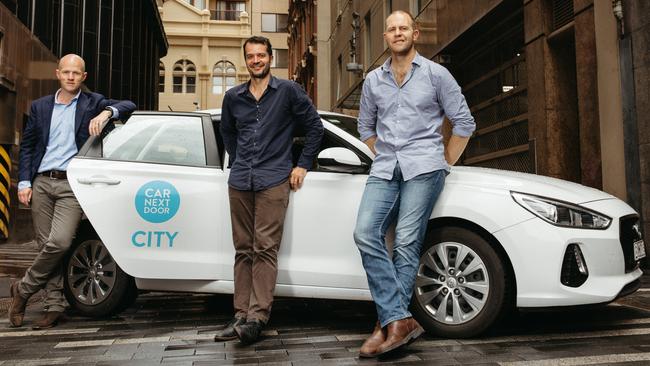A decade of Uber: The US giant’s surprising statistics
New data shows nearly 3 per cent of Australians have driven for the US ride sharing giant, amid criticisms of surge pricing and the gig economy.

Since Uber made its first ride in Sydney a decade ago the company has had 725,000 workers on its platform - about 3 per cent of the Australian population - who have driven more than 700 million Uber rides and delivered more than 450 million meals nationally.
The US tech giant, which claims to provide mobility to 96 per cent of Australians, is celebrating its 10th anniversary in Australia and says it currently has 100,000 local active drivers and delivery partners on its platform.
A spokesman, who shared insights as Uber marks its 10th anniversary in Australia on Thursday, said the figure reflected the company’s commitment to “flexibility”.
“Regarding retention, Uber is all about flexibility – we have some people who chose to drive only around holidays, or as students, for a bit of extra cash, and some have been driving with us for all 10 years,” he said.
Since 2012, the company has completed 700 million trips and retains 3.8 million active riders. Its UberEats platform, which launched in 2016, has seen 11 million Australians order more than 450 million deliveries from the 30,0000 restaurants the company works with.
Country manager Dom Taylor has shared his vision for the company’s future in Australia, which he believes will be the hub of modern transport. That vision involves ditching petrol vehicles eight years from now in a bid to turn its fleet green.
Mr Taylor acknowledged Uber’s drivers were among the biggest carbon emitters in the country, clocking three to four times more kilometres than the average car owner.
“When an Uber driver shifts to an EV versus a non-Uber driver that means that there are three to four times that benefits from a carbon perspective,” he said. “We can catch up so much faster, if high kilometre vehicles are leading the transition.”
Mr Taylor said he believed Uber drivers would become “critical change agents” in EV adoption as they held “300 micro conversations” each month with customers.
Mr Taylor said the company was still looking at whether it would adopt a pricing restructure upon the mass adoption of electric vehicles.
In recent months Uber has come under criticism for surge pricing during peak periods which, in some cases, have seen customers charged up to three times the regular fare.
Mr Taylor said Uber’s internal data reflected otherwise.
“The reality is that the demand for the service as domestic and international tourism has bounced back, as people are returning to the CBDs, as people go to dinners and bars, is that the demand is outstripping the growth in drivers,” he said. “That means there are pockets of the week when prices are being inflated because of that mismatch between drivers and riders.”
While the move to ditch petrol vehicles and only on-board electric cars by 2030 may seem bullish, it’s not unusual for the rideshare provider which muscled its way into the local market illegally in 2012.
Asked to reflect on how Uber kicked off its Australian operations, Mr Taylor said he believed Uber had been a catalyst for change in the gig economy.
“What I’ll say is that there were no regulations for ridesharing when we entered the market and over the last decade rideshare regulations have been enacted in every state and territory across Australia,” he said.
He believed Uber’s work with regulators would help to “continue to raise the bar from a customer perspective as well as a safety perspective”.
The company’s 10-year celebrations included the establishment of a $750,000 incubator-style mentorship program to help find the “next Uber”.
The program invited 100 drivers to receive $2500 as well as training in sales, marketing, raising capital, and the chance to pitch an idea and win $50,000.
Mr Taylor said many Uber riders would be familiar with jumping in a rideshare vehicle and hearing stories about a driver’s business idea.
“There’s lots of opportunities here that I know the people who are driving and delivering with Uber today are working on,” Mr Taylor said. “I really hope this is successful this year, in its first year, so that it can become a keystone piece of the Uber platform in Australia that we can build upon.”







To join the conversation, please log in. Don't have an account? Register
Join the conversation, you are commenting as Logout